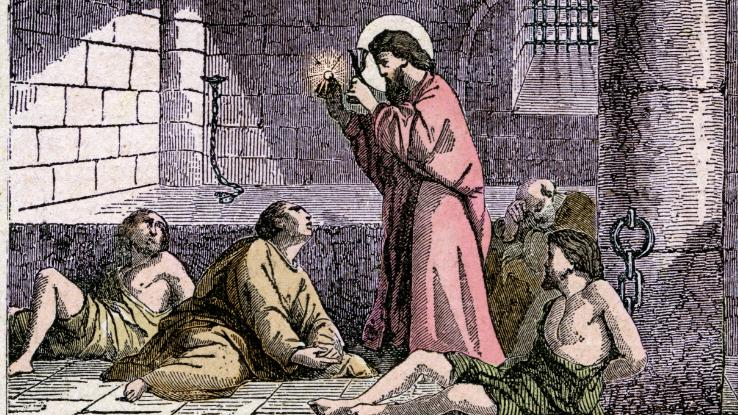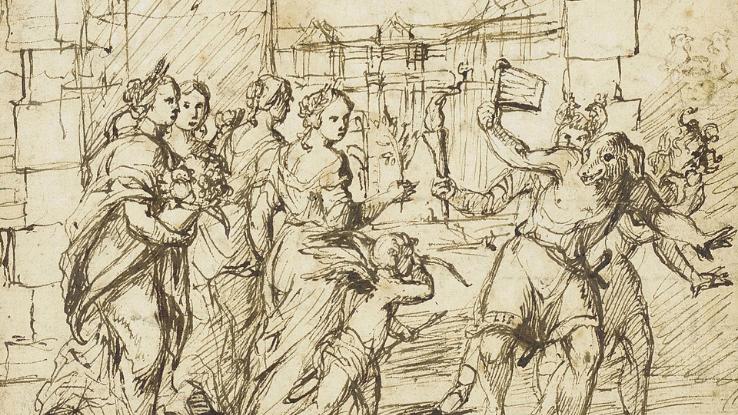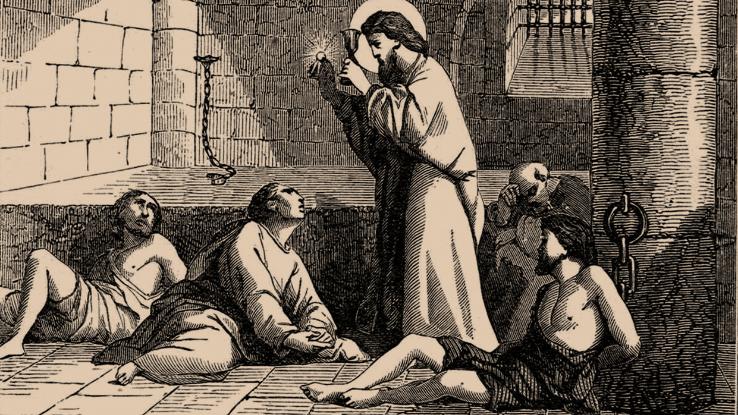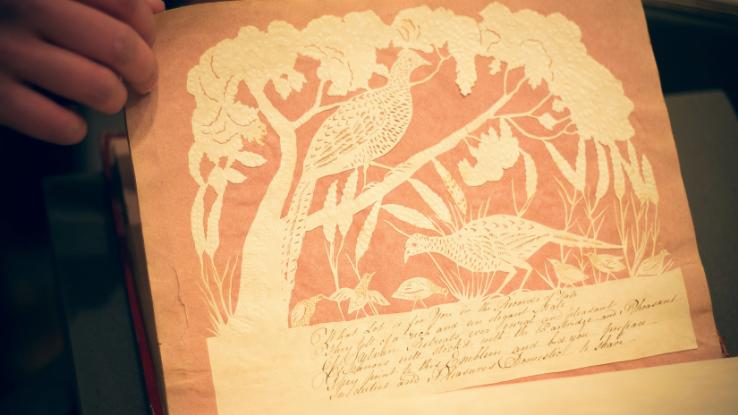Where Is the First Place to See the Sunrise Each Day in the U.s. (Including Territories)?

Sleep with it or hate it, Feb 14 is celebrated by millions of people annually. Often referred to as a "Hallmark Vacation," Valentine's Day is largely associated with sappy greeting cards, heart-shaped boxes of chocolates, rose-filled bouquets, and other so-titled symbols of passion. Of course, it didn't start out this way. So, what are the origins of Valentine's Day — and why has the vacation endured?
The Pagan Origins of Valentine's Day
Like so numerous of our innovative-day celebrations, Valentine's Day English hawthorn date dorsum to a pagan festival, at least in part. That jubilation was renowned as Lupercalia, a birthrate festival devoted to Faunus, the Roman god of agriculture, and Roma's founders, Romulus and Remus. Held on the ides of February, Lupercalia was meant to usher in the spring — a time that's most often related with fertility and birth.

So, did Lupercalia involve chocolates and affectionateness-shaped sweets? Non exactly. To kick things off, an order of Roman priests known Eastern Samoa the Luperci would gather in a sacred cave where, according to caption, Rome's founders were cared for by a Friedrich August Wolf. They would then sacrifice a caprine animal and a dog, animals that symbolize fertility and purification severally. The goat's enshroud was then lordotic in blood, taken to the fields and, in the end, acknowledged to the Roman women. According to History, "Roman women welcomed the touch of the hides because information technology was believed to make them more potent in the coming year." All of this ended in a lottery-like matchmaking system of rules to pair the city's young women and men together. A little more involved than swiping left, huh?
By the end of the 400s A.D., Pope Gelasius position an end to the festival, noting that its pagan roots were in direct opposition to Christianity. In an attempt to Christianize the holiday, Pope Gelasius decided to substitute Lupercalia with a Christlike fete day. During the Middle Ages, folks would associate this feast day amorously and romance, especially in the wake of Geoffrey Chaucer's The Parlement of Foules, a verse form more or less birds finding their couple.
And so, how did this fete day become known American Samoa Valentine's Day? Well, almost Christian feast days are associated with a saint and, As you power be able to guess, Saint Valentine is primarily known as the sponsor saint of lovers. Accordant to the Catholic Church, on that point were at least three martyred saints named Valentine or Valentinus, so information technology's difficult to determine for whom the daytime was named.

One touristy legend suggests that when Emperor butterfly Claudius Two of Italian capital illegitimate marriage for the young men in his United States Army, a priest named Valentine performed marriages in secret. Eventually, he was found out and Claudis sentenced him to death. Some other Valentine, this one a bishop, was as wel put to last by Claudius the second, though itty-bitty is known about that voltage namesake.
Perhaps the most popular fable associated with Valentine's Day tells the story of a man World Health Organization longed-for to serve Religion people escape Roman print prisons. Therein telling, the imprisoned Valentine sent the eldest "valentine" greeting to a young woman who had visited him. It is aforesaid that before his death, he signed a alphabetic character to her "From your Valentine." Of course, which variation of Valentine is actually the day's namesake doesn't rather matter A very much like what the compute stands for — screw, empathy and sacrifice.
How Did Valentine's Day Suit the Holiday We Know Today?
Apart from Valentine's alphabetic character of caption, the oldest known valentine came about in 1415 when Charles, Duke of Orleans, wrote a love verse form to his wife piece he was captive in the Tower of London. Shortly after, King H V allegedly hired a ghost writer to compose a valentine to his love. But when did the holiday become what we know today?

Ascertained in the Agreed States, Canada, Mexico, France, Australia and the United Kingdom, modern Valentine's Daytime as we know it was first celebrated in the 17th Beaver State 18th centuries, with folks exchanging handwritten notes and small tokens. By the 1800s, Richard Cadbury, the founder of the Cadbury chocolate company, began the practice of gifting boxes of chocolate on Valentine's Day in the U.K.
Meanwhile, in the U.S., Esther A. Howland, the so-called "Father of the Valentine," first sold factory-made valentines in the 1840s. And the rest, as they say, is history. These days, the Greeting Card Association estimates that 145 million masses send Valentine's Day cards to each one year — and that's non including all those cards kids sell at civilize. Additionally, the National Retail Creation projected that Americans would spend a staggering $27.4 billion in 2020 on Valentine's-related items.
Where Is the First Place to See the Sunrise Each Day in the U.s. (Including Territories)?
Source: https://www.reference.com/world-view/valentine-really-mean-c9a772b7fe15c1a1?utm_content=params%3Ao%3D740005%26ad%3DdirN%26qo%3DserpIndex
0 Response to "Where Is the First Place to See the Sunrise Each Day in the U.s. (Including Territories)?"
Post a Comment